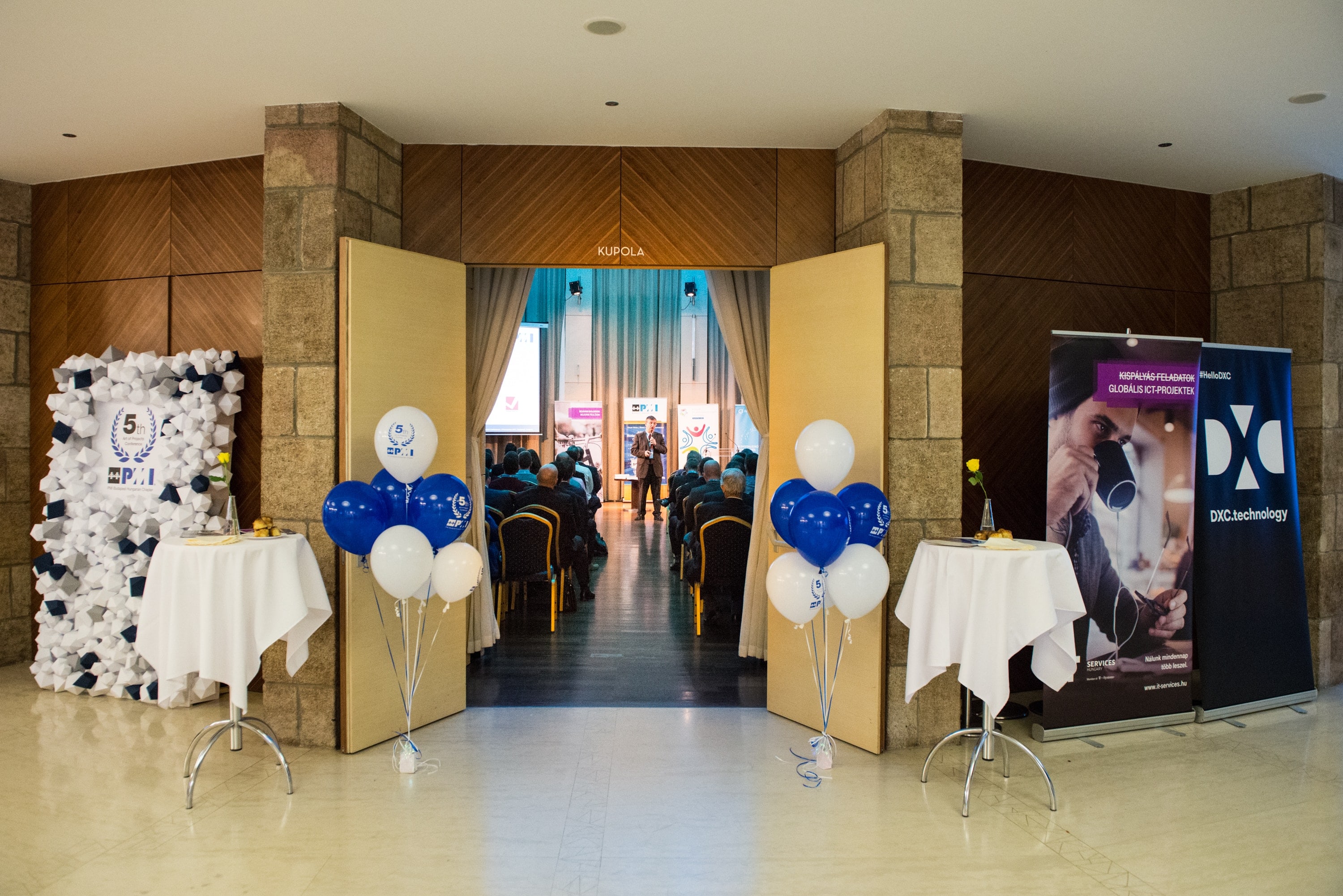On the 9th of November, the 5th annual Art of Projects Conference was held by PMI Hungary, Budapest Chapter, followed by the MasterClass Workshop on the 10th of November.

PMI Hungary’s goal with the Conference and the Workshop is to provide quality materials and presentations and to add something to the project management world here in Hungary. From year to year, we invite international speakers from all over the world to join us and to teach the audience something new, interesting and valuable. And in addition to the professional topics, PMI likes to provide an art block to the Conferences, because art can be a project, too. Each Conference has a theme as well, this year’s was Alice in Projectland, which was connected to presentations and designs.
The Conference and the Workshop both took place at MOM Cultural Center (MOMKult) in Budapest. From 08:15 on Thursday to 14:00 on Friday, the Center was filled with curious project managers and the presenters, who were also eager to learn more from each other. The mood was cheerful and attendees were free to talk to and share ideas with each other and the presenters as well. These events are always about improvement.
The event started with an opening ceremony held by Imre Szalay, the president of PMI Hungary, Budapest Chapter. Imre talked about the Chapter’s activities and achievements, including the award ceremony for Project Manager of the Year and Project Management Diploma of the Year which took place earlier that week. Then the winners of the awards were congratulated again at the opening ceremony: Péter Ecsedi for Project Manager of the Year and Zoltán Zahar for Project Management Diploma of the Year.
György Bőgel, professor of management at CEU was there as the moderator of the day and held a small presentation about an interesting small company (Blue River) who sold their design and prototype for $305 million. The lesson of his presentation was that ‘liking what you do is maybe the most important thing in project management’.
Paul Hodgkins’ presentation was about his time at Siemens starting from the age of 17 and continuing his work there for 30 years. His Seven lessons about leadership was a specifically motivating presentation, including the ups and downs of the profession and the weight of being a leader. His presentation also showed the human side of a leader at a large, international company: he showed that leaders aren’t born, they are made.
Bart Bernink’s presentation was about why Business Analysts should be the best friend of a Project Manager? The conclusion of his talk was that organizations demand more and more certified Business Analysts, and he talked about what makes someone a good Business Analyst. He also mentioned the importance of getting certifications such as IIBA and PMI-PBA Certificates, and how books and toolkits like the BABOK Toolkit published by the International Institute of Business Analysis and the Business Analysis Guide published by PMI can help the improving.
After Mr. Bernink’s presentation, there was a break: lunch and coffee were provided for the attendees in order to freshen up themselves and to get ready for the other half of the Conference. After the break, the art-project of the year, a Hungarian contemporary art-duo Nylon Group took the stage and showed their amazing performance. Angéla Eke, one of the performers held a little presentation before the break where she showed how art is also a project and how they built up their brand in order to survive in the world of contemporary art in Hungary.
Since this event is remarkable in the history of the Art of Projects Conference – it’s the 5th Conference – we thought it would be nice to celebrate it with a cake, so after the Nylon Group performance, cupcakes were provided to every attendee in order to celebrate this number together.
Giusi Meloni’s presentation was about Alice in Projectland: The Adventures of a Curious Project Manager, which also was chosen as the theme of the Conference. She talked about the aspects of curiosity, the cognitive and emotional qualities of a Curious Project Manager and how to use curiosity to built positive relationships and knowledge to inspire others.
Jürgen Van Gorp’s presentation was called The Castle: A Jolly Tale on the Use of Project Documentation, in which he talked about the importance of documentation and Project Management maturity in order to provide the best product possible. His slides were telling us a story about a castle (mentioned in the title), and it was entertaining to see the illustrations through the entire talk.
The last presentation of the was Geoff Reiss’ “The ghosts of project managers’ past”. In his talk he told the audience about great mans like Eduard Ferdinand Marie, Vicomte de Lesseps who built the Panama Canal and how did he overstep the difficulties and what we can learn from him. He also mentioned the Great Wall of China and Abu Simbel. From his presentation, project managements can see how every great building had a project management behind them and how one can still learn from them.
After the last presentation, the Conference came to an end: Imre Szalay and György Bőgel finished the 5th Art of Projects.
